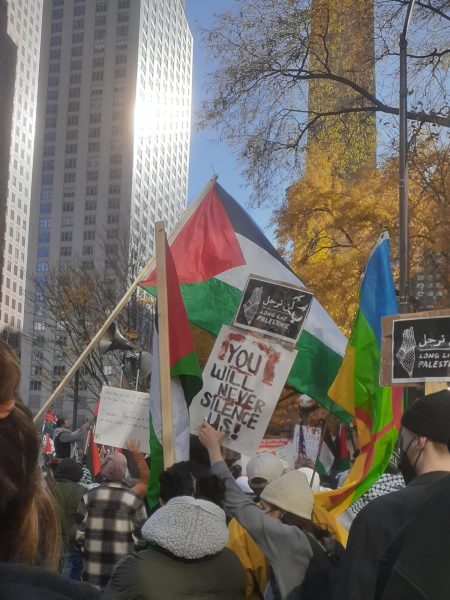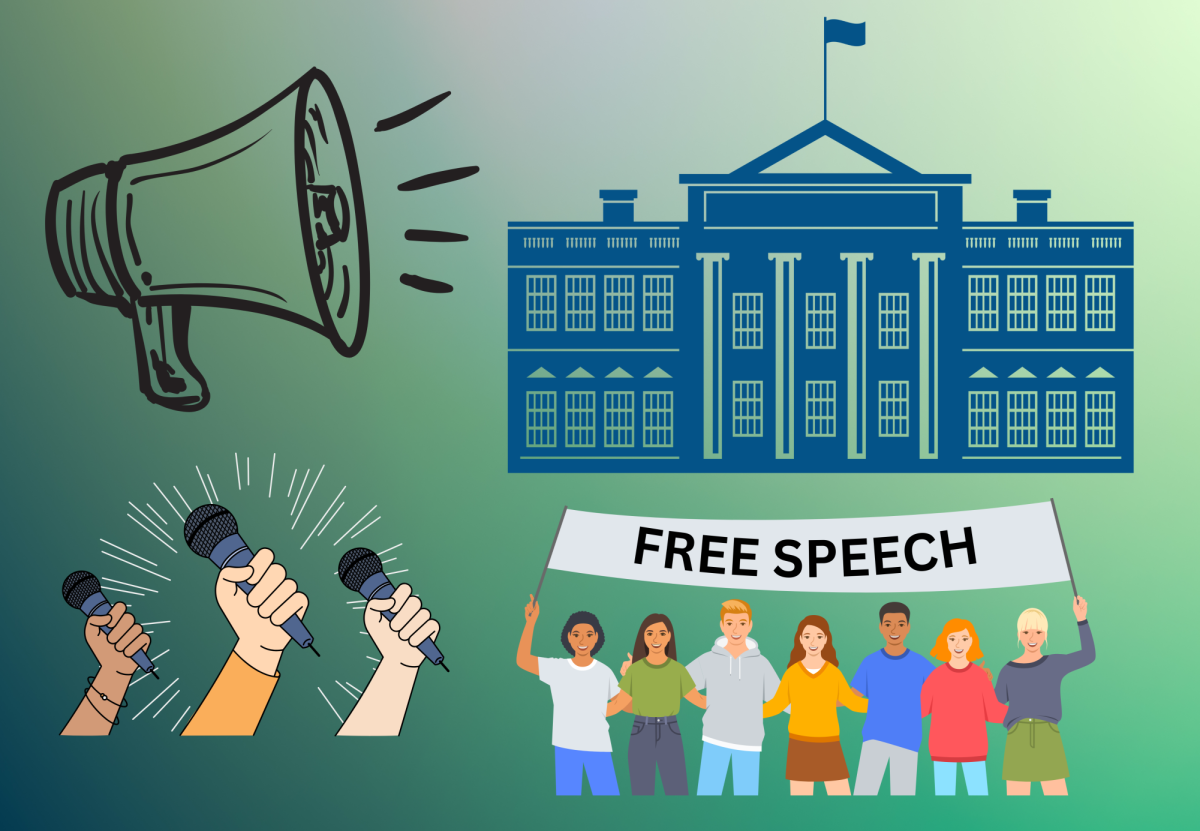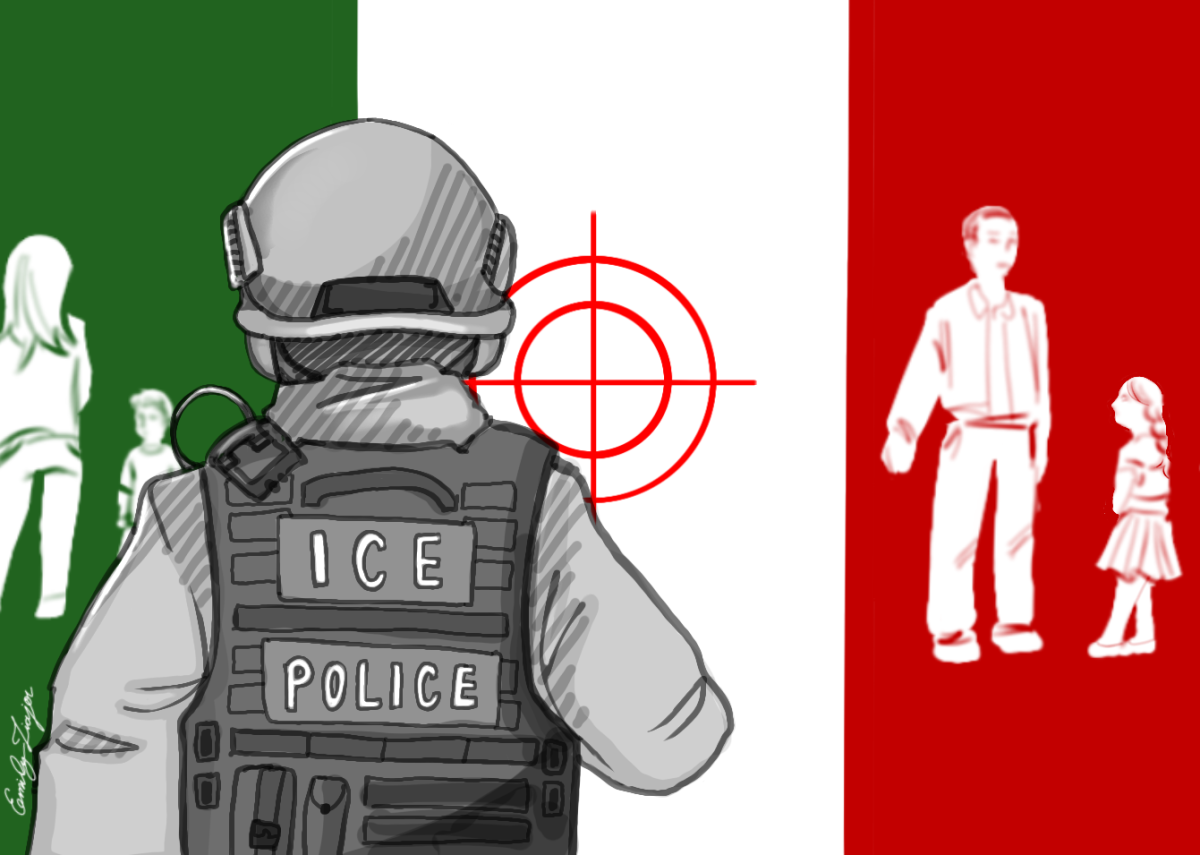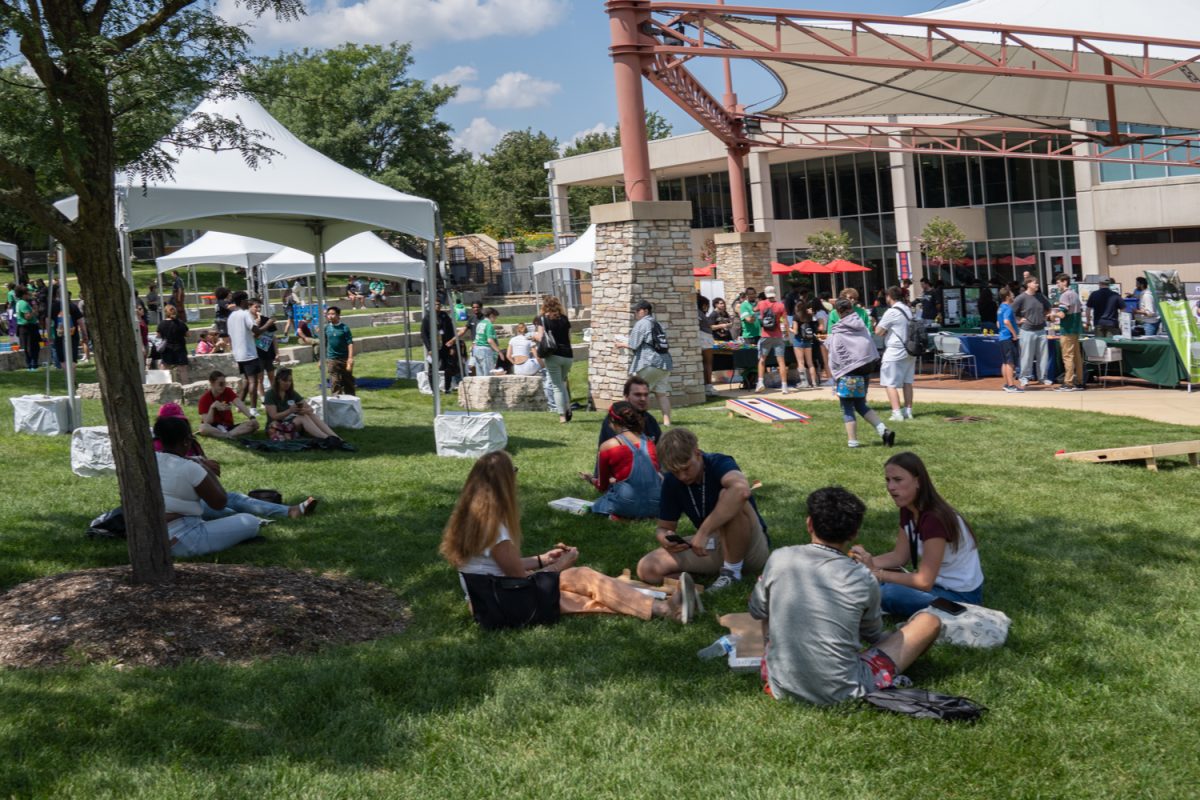Students across the nation gather to raise their voices in support of peace and justice amidst the ongoing war in Palestine and Israel. However, they have faced challenges. Jewish students of Brown University staged a sit-in to protest Israel’s actions but were arrested. Columbia University students hung their graduation gowns up on the university to protest its silence on the crisis.
For the past few months, the United States has witnessed many instances of higher education institutions penalizing groups of students for stating what is on their minds.
Columbia University, for instance, suspended two student groups– Students for Justice in Palestine and Jewish Voice for Peace– earlier last month under the pretext of “violating school policies” and accusing the two groups of “threatening rhetoric and intimidation.”
A blog post on the Jewish Voice for Peace website responded to the suspension, saying, “The students in these groups are acting with moral clarity. They are protesting war and trying to save lives by calling for a ceasefire… JVP condemns the Columbia administration’s unjust suppression of speech and advocacy for Palestinian liberation.”
On the other hand, students across the country feel that their particular college and university campuses are not properly addressing antisemitism or Islamophobia expressed in the name of free speech in public institutions, making various groups feel uncomfortable and unsafe. There is a debate regarding whether censorship about discussing Israel and Palestine should increase or decrease.
Aahiluddin Syed, a computer science major and Student Leadership Council member at College of DuPage, feels that free speech is more effectively implemented among smaller groups of people compared to large-scale uses of speech, namely mass media.
“When it comes to conversation between just communities, I think those tougher conversations are coming up a lot more now, [which is good because] we need to hear the other side,” he said. “However, for media, I think it’s a lot more focused on just one side. Have you seen the video of 40 news [broadcasts] playing at the same time? [They were] all kind of saying the same thing.”
Syed is referring to a 2018 incident in which 36 different news channels from across the country recited the same script verbatim. This video is referred to as the Sinclair script by analysts because all 36 news channels are owned by the Sinclair Broadcast Group and were told to read the same script. Many analysts from other large news outlets point to this Sinclair script video as a display of the larger issue of how large media outlets are told what to say and only present one narrative.
The incident Syed mentions sheds light on concerns regarding media coverage of sensitive topics such as Israel, the attacks on Gaza and the bias it may oftentimes contain. NPR, for instance, has been accused of understating the harm done to Palestinian civilians by the IDF during their reports.
Richard Forst, an attorney and constitutional law professor at College of DuPage, clarifies what entails and does not entail free speech guaranteed under the First Amendment to the best of his knowledge. He testifies that his analysis is based on historical research about lawmaking and Supreme Court cases, and is free of his own bias.
“From the First Amendment’s perspective, the Supreme Court has made it clear that there’s a very high bar on restricting an individual’s right to free speech or a group’s right to free speech,” he explained. “That high bar is incitement, which means unless the speech incites a reaction of violence in an imminent fashion. The other standard is also one of whether it’s targeted toward a particular individual.”
Brandeis University announced on Nov. 6 that it would ban the Students for Justice in Palestine group from campus, a decision that has been met with criticism. According to a spokesperson from the university, the group’s statements implied a “call for the elimination of the only Jewish state in the world and its people.” The ban was enacted after Florida officials, including Governor Ron DeSantis, urged universities to ban their SJP groups.
Foundation for Individual Rights and Expression senior program officer at Brandeis University, Zach Greenberg, addressed the university’s ban, saying, “None of the chants or slogans cited by President Liebowitz come close to meeting the legal criteria for incitement or harassment. Make no mistake, Brandeis is punishing its students for nothing more than protected political advocacy.”
“Free speech does not extend to someone using inflammatory language in the context of a physical confrontation or in the context of a threat of a physical confrontation,” Forst stated. “That’s not protected speech. [This is all] based on my interpretation of the First Amendment and the Constitution. It’s not based on my personal opinions.”
In relation to debate and discussion among opposing groups, Forst affirms that such discourse is permitted according to the First Amendment of the Constitution and that debates require open minds from the parts of both listeners and debaters.
“The First Amendment protects debate,” he said. “In other words, the idea of our First Amendment is to promote uninhibited debate— even debate between individuals who are completely opposed to each other and find the other’s opinions to be completely revolting. As long as it doesn’t meet those standards that I stated before, which is a very high bar. What the First Amendment should do is promote that debate. The idea being that you as an individual in one of those groups can learn, first of all, what the other side is saying and why they are saying it. And secondly, how you can effectively defeat the argument on the other side. If you’re not able to even hear what their argument is because somebody has restricted that, has prevented you from hearing it, there can’t be any debate. What our Constitution is stating is that what’s best for our open and free society is uninhibited debate.”

He adds that protesters and activists should avoid holding double standards when it comes to implementing free speech in protest and debate contexts. Some view the banning of SJP and JVP in Brandeis, Columbia and George Washington University as evidence of this double standard. The Guardian’s Nov. 25 article titled, “It’s OK, we disagree” states that colleges and universities across the U.S. have a tendency to want to suppress protests– specifically demonstrations protesting Israel’s unjustified aggression against Palestinians
“If some group decides to go into a public square or into a public part of a campus at a university in a multi-demonstration, and someone gets on a soapbox and starts to speak, you need to understand if you’re in that group— or you’re that person speaking— that it’s also allowed for another group to pass right outside your group and to protest that,” Forst stated. “Both of those are allowed in the First Amendment. You should anticipate that people will debate, will counter you, will protest against what your ideas are, because all of that is protected speech.”
Multiple college campuses across the country– including the University of Chicago and Elon University– have had protests involving peaceful discussions with individuals who disagreed with the protests’ messages.
College of DuPage has hosted faculty-facilitated events to educate students as well as create safe spaces where all feel validated, including a vigil held on Nov. 2, a discussion panel led by three professors held on Nov. 8 and an event educating attendees on emotion coping strategies related to international adversity held on Nov. 14.
Syed’s sentiments regarding debate aligned with Forst’s interpretation of the First Amendment encouraging constructive discussion.
“If you want to construct a conversation, or if you want to get something out of a conversation about a debatable topic, we need to hear the other side,” he affirms. “The number one thing that I think can clear out almost every controversial topic is just listening to the other side.”
He adds that the manner and tone in which a conversation or debate is conducted is critical to its success and practicality— that participants should be relaxed and open-minded rather than tense.
“I think the way you say your things is also very important,” Syed said. “Keeping a calm and collected voice and being calm and collected is a lot more important than being on your tippy toes, nervous and bouncing around. I feel like a lot of us— and I include myself sometimes— tend to have a fixed assumption that we’ve already made before we even jump into a topic, or conversation with someone from the opposite side. That’s why we listen to them with our ears closed. [As a result], we don’t really listen to what they’re saying. We kind of just let them talk and then we say what we want to say.”
Forst informs College of DuPage students that there are civil, nonviolent methods of protest that are permitted for them to implement as per the First Amendment. An example of this would be the thousands of flags placed on the outdoor campus at the University of Illinois at Chicago to honor the over 14,000 Palestinian civilians who lost their lives after the Oct. 7 attacks. It was done specifically as a way of protesting the university’s failure to condemn the injustices occurring in Gaza and Israel, as well as acknowledge the emotional impact of such casualties on Palestinian-Americans, including domestic hate crimes such as the recent shooting of three Palestinian college students in Vermont.
For students at COD to protest, Forst described the guidelines they must follow under the Code of Student Conduct.
“If a group or individual wants to protest in a place where protest is allowed, the institution does have the right to state where and how that should occur,” Forst reminded. “In other words, you can’t walk into someone’s classroom and start protesting. That’s not something that the institution has to allow. But there are plenty of avenues on campus, outside campus for protest and that’s up to the group to decide how they want to do that. They can do a march, they can stand in a circle, they can separately walk around the campus with signs. All that is allowed and cannot be restricted.”
College of DuPage has currently not expressed support or bias in favor of any particular group or minority, choosing to resort to an emphasis on unity and coexistence instead. On Oct. 26, an email was sent to all COD students that read, “As the impact of world events and eruption of violence unfold around us, it is easy to understand how you may feel worried, stressed, concerned and anxious. At College of DuPage, we believe in fostering a culture of care and supporting all students. We are here to assist any student experiencing difficulties.”
College of DuPage students may refer to the Code of Student Conduct regarding how to protest or how to address hearing potentially harmful speech.









